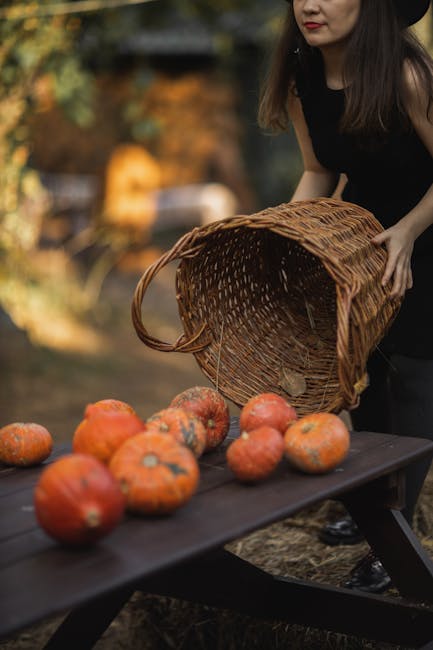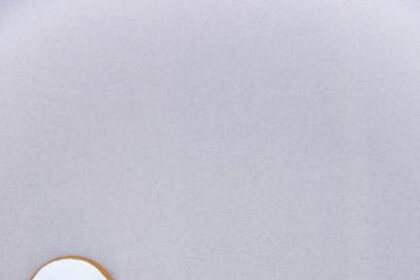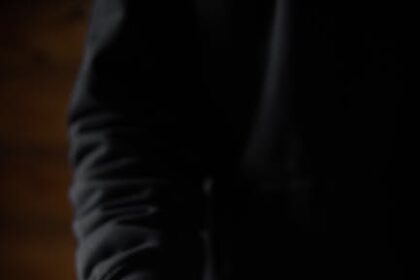Creative Strategies for TikTok Ad Success: Understanding the Nuances of the For You Page Algorithm
TikTok’s advertising landscape is fundamentally different from traditional digital marketing channels, demanding a unique approach to creative strategy. Success on TikTok isn’t merely about running ads; it’s about creating content that resonates natively with the platform’s user base and algorithm, mimicking organic virality. The “For You Page” (FYP) is TikTok’s core engine, and understanding its emphasis on engagement, authenticity, and trend relevance is paramount. Advertisers must shift from traditional campaign-centric thinking to a content-centric mindset, prioritizing the look and feel of organic TikToks over polished, highly produced commercials. The most effective ads blend seamlessly into the user’s feed, delivering value or entertainment before any overt sales pitch. This requires a deep dive into what makes TikTok content compelling and how those elements can be strategically leveraged within an advertising framework.
Embracing Authenticity: The UGC Imperative in Ad Creative
Authenticity is the bedrock of TikTok’s appeal. Users flock to the platform for genuine, raw, and often unpolished content from creators and peers. This preference directly impacts ad effectiveness. Highly produced, slick, and overtly commercial ads often underperform because they clash with the FYP aesthetic. The creative strategy must pivot towards User-Generated Content (UGC) style ads, even if the content is brand-created. This means embracing a less polished, more relatable visual and narrative style. Think shaky handheld camera footage, direct address to the camera, minimal fancy transitions, and a conversational tone. The goal is to make the ad feel like a recommendation from a friend or an organic discovery, rather than an interruptive advertisement. This can involve casting real people, using natural lighting, incorporating popular TikTok editing techniques like jump cuts and text overlays, and ensuring the talent looks and sounds like a typical TikTok user, not a professional actor reading a script. The “unboxing” video, for instance, should genuinely look like someone unboxing a product for the first time, complete with spontaneous reactions and candid remarks, rather than a meticulously planned studio shoot. Testimonials should feel like genuine endorsements from satisfied customers, sharing their actual experiences, not rehearsed lines. Brands can actively solicit UGC from their existing customers, encouraging them to create videos using specific hashtags or sounds, and then leverage these high-performing organic pieces as Spark Ads. When creating their own UGC-style content, brands should focus on everyday scenarios, relatable struggles that their product solves, or candid moments of joy that the product facilitates. The visual language should be unpretentious, utilizing natural lighting, often shot on a smartphone, and avoiding overly dramatic or artificial settings. The voiceovers, if used, should sound like a casual conversation, friendly and approachable, rather than a formal announcer. This commitment to visual and narrative authenticity is not a compromise on quality but a strategic alignment with the platform’s unique content consumption patterns.
The Primacy of Sound: More Than Just Background Music
TikTok is a sound-on platform, unlike many other social media feeds where users scroll silently. Sound is an integral part of the TikTok experience, often driving trends, emotion, and memorability. Creative strategies for ads must treat audio as a co-star, not just a supporting element. Relying solely on visuals will significantly limit an ad’s potential. Trending audio is a powerful tool for ad success. By integrating popular songs, soundbites, or voiceovers into ad creatives, brands can immediately tap into existing cultural relevance and increase the likelihood of users stopping their scroll. The sound acts as an auditory hook, drawing familiar recognition and often triggering an emotional response associated with the trend. However, simply slapping a trending sound onto any video isn’t enough. The visual content must align with the tone, rhythm, and often the specific context of the trending audio. A humorous soundbite works best with a comedic visual, while an upbeat pop song suits energetic product demonstrations. Marketers must stay agile, constantly monitoring the “For You Page” and TikTok’s Creative Center for emerging sounds and trends, and be prepared to produce new creative assets rapidly to capitalize on them before they fade.
Beyond trending audio, custom sound design offers a unique opportunity for brand building and differentiation. Developing original jingles, branded voiceovers, or unique sound effects associated with a product can create strong sonic branding that enhances memorability. A distinct sound can become a signature element of a brand’s presence on TikTok, instantly recognizable even without the visual component. This is particularly effective for brands that prioritize long-term brand equity. For instance, a quick, memorable sonic logo at the beginning or end of an ad can reinforce brand recognition. Voiceovers should be natural, engaging, and conversational, reflecting the authentic tone of the platform. They can guide the viewer through a demonstration, tell a mini-story, or deliver a compelling call to action. The overall sound mix should be professional yet natural, ensuring clear dialogue, appropriate music levels, and impactful sound effects that enhance the narrative without overwhelming it. Strategic use of music can also dictate pace and mood. Upbeat, fast-paced music can be used for quick product showcases, while more mellow tunes might accompany lifestyle content or testimonials. The selection of music licenses is also critical; utilizing TikTok’s Commercial Music Library ensures legal compliance while accessing a vast array of tracks.
The Hook: Mastering the First Three Seconds
TikTok’s rapid-fire scrolling behavior means advertisers have an incredibly narrow window to capture attention. The “hook” – the opening 1-3 seconds of an ad – is the most critical element of any TikTok creative. If the hook fails, the rest of the ad, no matter how brilliant, will likely go unseen. Creative strategies must meticulously plan and test various hook concepts to maximize immediate engagement. One effective hook strategy is to immediately address a pain point or question that resonates with the target audience. For example, “Tired of X problem?” or “Do you struggle with Y?” followed by a quick visual demonstration of the problem. Another powerful hook is curiosity-inducing. This could be a surprising visual, an unexpected statement, or a question that prompts the viewer to wonder what comes next. “You won’t believe what this can do!” or a quick reveal of an unusual situation can compel continued viewing. Bold statements or provocative claims can also serve as effective hooks, immediately grabbing attention and encouraging skepticism or agreement, which translates to engagement. Relatable scenarios work well too; showing a common, everyday situation that the audience immediately identifies with can create an instant connection, prompting them to think, “That’s me!”
Visual hooks are equally important. This could be a dynamic camera movement, an intriguing prop, a person making direct eye contact, or a visually striking color palette. The visual must be strong enough to stand out against the constant stream of content. Text overlays within the first few seconds can also serve as powerful hooks, highlighting a key benefit or posing a question that demands an answer. For instance, a bold text overlay saying “GAME CHANGER” or “The Secret to [Desired Outcome]” can immediately pique interest. The key is to avoid slow intros, lengthy brand logos, or generic stock footage. Every millisecond of the hook must be purpose-driven and designed to stop the scroll. Marketers should dedicate significant resources to brainstorming, prototyping, and A/B testing multiple hook variations for each ad creative. The best hooks are often simple, direct, and leverage an understanding of human psychology, whether it’s curiosity, relatability, or the promise of a solution. The visual and auditory elements of the hook must work in tandem to create an immediate impact, leveraging fast cuts, punchy sound design, and clear, concise messaging to convey the ad’s core proposition almost instantaneously.
Storytelling in Micro-Moments: Narrative Arcs in Seconds
Despite the short-form nature of TikTok, effective ads often tell a compelling story, even if it’s condensed into a few seconds. The narrative arc might be simplified, but the core elements of problem, solution, and transformation can still be communicated powerfully. One popular storytelling format is the “Before & After” transformation. This visually demonstrates the product’s impact, showing a clear contrast between the initial state (the problem) and the improved state (the solution delivered by the product). This works particularly well for beauty, fitness, home improvement, or organizational products. The storytelling should be quick, visually driven, and make the transformation immediately apparent, often with a satisfying reveal. Another effective narrative approach is the “Day in the Life” or POV (Point of View) style. This places the viewer directly into a relatable scenario where the product naturally integrates into everyday life. A POV shot of someone struggling with a common task, then effortlessly completing it with the product, creates an immersive and relatable story. This often resonates because it mirrors the organic, first-person content common on the FYP.
Solving a user pain point is a foundational storytelling strategy. The ad begins by explicitly stating or visually demonstrating a problem that the target audience experiences, then swiftly introduces the product as the ultimate solution. This direct problem-solution narrative is highly effective because it immediately addresses a need. For example, an ad for a cleaning product might show a frustrating mess, followed by the product making quick work of it. Unboxing and demonstration narratives also offer a compelling storytelling framework. The act of unboxing creates anticipation, while the subsequent demonstration highlights key features and benefits in action. This format allows brands to showcase the product’s design, functionality, and ease of use in a natural, engaging way. The storytelling should focus on the benefits to the user, not just the features of the product. How does the product make life easier, more enjoyable, or solve a specific frustration? The emotional connection derived from a mini-story often outperforms a purely feature-focused ad. The pacing should be rapid, with concise visuals and text overlays supporting the narrative without becoming overwhelming. The challenge lies in distilling a complex story into its most impactful moments, relying on visual cues and strong audio to convey emotion and information quickly. Each segment of the story, from setup to resolution, must be visually distinct and contribute directly to the overall message, ensuring that even a fraction of a second is used purposefully.
Leveraging Trends and Challenges for Organic Integration
TikTok’s dynamic nature means trends emerge and fade with incredible speed. For advertisers, this presents both a challenge and a massive opportunity. Successfully leveraging trending challenges and popular hashtag movements allows brands to tap into ongoing cultural conversations, increasing the likelihood of their ads being perceived as organic content rather than overt marketing. The key is timely adaptation and creative interpretation. Simply jumping on a trend without aligning it to the brand’s message or product can feel forced and disingenuous. Instead, marketers should analyze trending challenges (e.g., specific dances, sound-driven skits, visual transformations) and brainstorm how their product or service can authentically integrate into that trend. This might involve adapting a popular sound with new lyrics relevant to the brand, using a trending visual filter to showcase a product feature, or participating in a challenge by demonstrating how the product helps achieve the challenge’s goal. The brand’s participation should add value or a unique twist to the trend, making it entertaining or informative for the audience.
Hashtag challenges, whether organic or branded, are another powerful avenue. Branded hashtag challenges encourage user-generated content, but even participating in popular generic hashtags can significantly increase discoverability. Researching relevant and high-performing hashtags that align with the ad’s content and target audience is crucial. The content within the ad should feel like a natural contribution to the hashtag community. Duet and Stitch features offer even more interactive creative opportunities. Duets allow users to create a side-by-side video with an existing TikTok, while Stitch enables users to clip and integrate scenes from another TikTok into their own. Brands can use Duets to react to user-generated content featuring their product, or to create a call-and-response ad with a partner creator. Stitching can be used to build upon an existing narrative, perhaps showcasing a problem identified in another video and then presenting the product as the solution. These interactive features foster a sense of community and direct engagement, making the ad experience more participatory. However, it’s crucial to ensure all Duets and Stitches are brand-safe, appropriate, and adhere to content guidelines. The rapid evolution of trends necessitates an agile creative team that can quickly conceptualize, produce, and deploy new ad variations to capitalize on fleeting opportunities. This means having a robust content calendar that allows for spontaneous trendjacking alongside evergreen content.
A/B Testing and Dynamic Creative Optimization (DCO)
Given TikTok’s fast-paced environment and the nuances of the FYP algorithm, continuous A/B testing of creative elements is not just recommended but essential for sustained success. What works one week might not work the next, and what resonates with one segment of the audience might fall flat with another. A systematic approach to testing allows advertisers to identify high-performing elements and refine their creative strategy based on data. Key elements to A/B test include:
- Hooks: Test different opening seconds – problem statement, curiosity-inducing, bold claim, relatable scenario.
- Visual Styles: Compare UGC-style footage against slightly more polished (but still native) visuals, or different aesthetic treatments.
- Calls to Action (CTAs): Test different CTA wording, visual placement (on-screen text, voiceover), and urgency levels.
- Audio Variations: Experiment with different trending sounds, custom music, voiceover styles, or a mix of both.
- Ad Length: While most TikTok ads are short, testing slightly longer (e.g., 15-second vs. 30-second) ads can reveal optimal viewer retention points.
- Talent/Characters: Different individuals or archetypes might resonate differently with specific audience segments.
- Overlays & Text: Variations in text size, font, color, animation, and placement can impact readability and engagement.
Beyond simple A/B testing, Dynamic Creative Optimization (DCO) takes this a step further by automatically assembling personalized ad variations based on user data and real-time performance. DCO platforms allow advertisers to upload multiple creative assets (different hooks, product shots, CTAs, background music, text overlays) and then, driven by machine learning, generate thousands of unique ad combinations. These combinations are then served to users based on their likelihood of engagement, as predicted by the algorithm. This ensures that each user potentially sees the most relevant and highest-performing version of the ad. For TikTok, DCO is particularly powerful because it allows brands to maintain authenticity and native feel while still delivering personalized experiences at scale. For instance, a DCO campaign might test a specific hook with different product shots for users interested in fashion versus home decor, or use different music for younger versus older demographics. The key benefit of DCO is its ability to combat creative fatigue by constantly refreshing ad permutations, ensuring that users are less likely to see the exact same ad repeatedly. It also allows for rapid learning and adaptation, as the system continually optimizes for the best-performing combinations, providing invaluable insights into what creative elements truly drive results.
Spark Ads: Boosting Organic Content for Ad Reach
Spark Ads represent a unique and highly effective creative strategy on TikTok, blurring the lines between organic content and paid advertising. Instead of creating traditional “dark posts” (ads that don’t appear on a creator’s organic profile), Spark Ads allow brands to boost existing organic TikTok posts from their own account or, more powerfully, from creator accounts (with the creator’s permission). This strategy is incredibly potent because it leverages the inherent authenticity and virality of organic TikTok content. When a user sees a Spark Ad, it appears as an organic post from a familiar creator or brand account, complete with likes, comments, and shares, rather than a generic “Sponsored” label. This significantly increases trust and engagement, as the content has already proven its ability to resonate organically.
The creative strategy for Spark Ads involves identifying high-performing organic content. This means closely monitoring analytics for posts that achieve high view rates, engagement, shares, and positive comments. These “viral” organic pieces are prime candidates for amplification through Spark Ads. When partnering with influencers, Spark Ads allow brands to leverage the influencer’s established credibility and authentic voice. The influencer creates organic content featuring the product, and if it performs well, the brand can then promote that exact post as a Spark Ad. This feels far more natural than a brand pushing its own heavily branded ad through an influencer’s profile. Benefits of Spark Ads include higher view-through rates, increased engagement, and often lower CPMs compared to standard in-feed ads. They leverage social proof directly, as the ad displays the real-time engagement metrics of the original post. The creative content doesn’t need to be specifically designed as an “ad” from the outset; it just needs to be a compelling piece of organic TikTok content. This encourages a shift in creative strategy towards producing engaging, native content first, with the option to amplify it later if it proves successful organically. It also simplifies the creative process, as brands can simply re-purpose content that has already demonstrated audience appeal.
Interactive Add-Ons: Engaging Users Directly
TikTok’s advertising platform offers various interactive add-ons that can significantly enhance creative engagement beyond passive viewing. These features allow users to interact directly with the ad, turning a one-way communication into a two-way dialogue, which can improve recall, intent, and ultimately, conversion.
- Polls: Brands can embed interactive polls directly into their video ads, asking users questions related to their product, preferences, or a broader topic. For example, a skincare brand might ask, “Dry skin vs. Oily skin – which is your struggle?” This not only gathers valuable audience insights but also encourages active participation, making the ad more memorable and personalized.
- Display Cards: These are clickable overlays that appear on top of the video ad, typically showcasing product features, pricing, or key benefits. They can provide additional context or information without requiring the user to leave the ad. A fashion brand might use a display card to highlight different colors available for a dress shown in the ad.
- Pop-Up Showcases: Similar to display cards, but often more visually dynamic, pop-up showcases can reveal multiple product images, prices, or even short video clips when a user taps on them. This allows for a deeper dive into product offerings within the ad unit itself, ideal for e-commerce.
- Gesture-Based Interactions: Some advanced ad formats allow users to interact with the ad using specific gestures, such as nodding their head or blinking. While more experimental, these highly immersive experiences can create a strong sense of novelty and engagement, making the ad stand out.
- Countdown Stickers: For promotions or limited-time offers, a countdown sticker creates urgency and encourages immediate action. This visual cue can be highly effective in driving conversions by leveraging the fear of missing out.
The creative strategy for using interactive add-ons involves considering how these elements can genuinely enhance the user experience and contribute to the ad’s objective. They shouldn’t be tacked on arbitrarily but integrated naturally into the ad’s narrative. For instance, a poll should flow logically from the video content, and a display card should provide relevant, concise information that complements the visuals. These interactive elements move beyond traditional linear video advertising, tapping into TikTok’s inherent gamified and participatory nature. By inviting direct user input or exploration, brands can foster a deeper connection, increase time spent with the ad, and gather valuable first-party data that can inform future creative strategies. The goal is to make the user feel like an active participant, not just a passive viewer.
Green Screen and Visual Effects: Enhancing Production without High Cost
While authenticity favors a raw, UGC look, TikTok’s native editing tools, including Green Screen and a vast array of visual effects and filters, offer powerful ways to enhance creative production without requiring expensive studio setups. These tools allow brands to add polish, humor, or professional touches while still maintaining the “TikTok native” aesthetic.
-
Green Screen: This popular feature allows users to overlay themselves or objects onto various backgrounds, including images or videos. For advertisers, this means:
- Product Placement: A creator can easily showcase a product in different virtual environments or scenarios without physical travel. A travel app, for example, could show a user seamlessly jumping from a beach in Bali to a mountain in Switzerland using Green Screen.
- Data Visualization: Presenting statistics or graphs in an engaging way by having a person stand in front of them and interact with the data points.
- Contextual Storytelling: Placing products within relevant, dynamic scenes that would otherwise be costly to film.
- Creative Explanations: Simplifying complex topics by visually changing backgrounds to illustrate different points.
-
Visual Effects and Filters: TikTok boasts an extensive library of effects, from subtle color gradients to augmented reality (AR) filters that can transform faces or environments. Brands can leverage these:
- Branded Filters: Creating custom AR filters that users can apply, incorporating brand logos or product elements. This encourages user-generated content and organic reach.
- Trending Filters: Incorporating popular filters into ad creative to tap into ongoing visual trends and make the ad feel current.
- Aesthetic Enhancement: Using filters to achieve a specific mood or visual style that aligns with the brand’s identity, without needing extensive post-production.
- Dynamic Text: Utilizing TikTok’s native text animation tools to create engaging and attention-grabbing on-screen text overlays, which are crucial for sound-off viewing scenarios.
The strategic use of these in-app tools reinforces the native feel of the ad. Content created with these features often feels more at home on the FYP than external, high-end production. It demonstrates an understanding of the platform’s ecosystem and a willingness to speak its visual language. It also significantly lowers the barrier to entry for producing creative, allowing for more rapid iteration and testing. Creative teams should familiarize themselves intimately with TikTok’s constantly updated effects library and brainstorm ways to integrate them into their ad narratives. The goal is to enhance storytelling, highlight product features, or simply make the ad more visually dynamic and entertaining, all while maintaining the authentic, user-generated feel that TikTok users expect.
Measuring and Optimizing Creative Success
Creative success on TikTok isn’t just about views; it’s about how those views translate into meaningful engagement and business outcomes. A robust measurement framework is essential to understand what creative strategies are working and why, enabling continuous optimization.
-
Key Performance Indicators (KPIs) for Creative Evaluation:
- Click-Through Rate (CTR): Measures how many people click on your ad after viewing it. A high CTR indicates a compelling hook and strong call to action.
- View-Through Rate (VTR) / Watch Time: For short-form video, VTR (e.g., % of viewers who watch 75% or 100% of the video) is crucial. High watch time signifies that the content is engaging and holds attention. TikTok’s metrics often include Average Watch Time, which is a powerful indicator of creative resonance.
- Engagement Rate (Likes, Comments, Shares): Reflects how much the content resonates emotionally or intellectually with the audience. High shares are particularly valuable as they indicate organic virality.
- Conversion Rate: The ultimate business KPI, measuring how many viewers complete a desired action (e.g., purchase, sign-up, app install).
- Cost Per Result (CPR): Efficiency metric, indicating how cost-effective a creative is in driving conversions or other desired actions.
- Reach and Frequency: Understanding how many unique users see your ad and how often they see it helps manage ad fatigue.
-
Analyzing Creative Performance Reports: Digging into TikTok Ads Manager reports reveals patterns in creative performance. Identify your top-performing creatives across different segments and analyze their common attributes (e.g., specific hooks, audio choices, visual styles, talent). Conversely, understand why underperforming creatives failed – was the hook weak? Was the CTA unclear? Did the ad feel too much like a traditional commercial? Analyzing audience demographics and how different creatives resonate with specific age groups, genders, or interests provides valuable insights for targeting and personalization. This iterative testing and analysis loop is critical for continuous improvement.
-
Iteration and Refreshing Creative: Combating Ad Fatigue: Ad fatigue is a significant challenge on TikTok due to the high content volume and rapid consumption. Users quickly become bored or annoyed by seeing the same ad repeatedly. Recognising ad fatigue signals (e.g., declining CTR, rising CPR, negative comments about repetition) is crucial. Creative refresh strategies are paramount:
- Develop multiple creative variants: Don’t rely on a single ad. Produce several variations of each core message, testing different hooks, visuals, and audio.
- Batch creative production: Plan for regular “creative sprints” to produce a continuous stream of fresh content.
- Set a refresh schedule: Depending on budget and campaign duration, plan to rotate new creatives every 1-2 weeks for active campaigns to keep the experience fresh for the audience.
- Repurpose and re-edit: Existing high-performing creative can often be re-edited with new music, voiceovers, or hooks to create “new” versions without starting from scratch.
-
The Creative Feedback Loop: From Data to New Concepts: The insights gleaned from performance data should directly inform new creative development. This creates a virtuous cycle:
- Internal Team Brainstorming: Use performance data to fuel creative brainstorming sessions, focusing on what worked and what didn’t.
- Learning from Competitors: Observe successful ad creatives from competitors and other brands on the FYP. Analyze their hooks, storytelling, and use of trends, and adapt lessons learned.
- Soliciting User Feedback (Indirectly): While direct surveys are less common, monitoring comments on organic posts and Spark Ads can offer qualitative insights into user sentiment towards different content styles.
- Agile Creative Development: Adopt an agile methodology for creative production, allowing for rapid ideation, prototyping, testing, and iteration rather than lengthy, linear production cycles. This agility is key to staying relevant on TikTok.
By meticulously tracking performance, understanding the nuances of the FYP, and committing to continuous creative iteration, brands can build a sustainable and highly effective advertising presence on TikTok, transforming short-form video into significant business growth.











